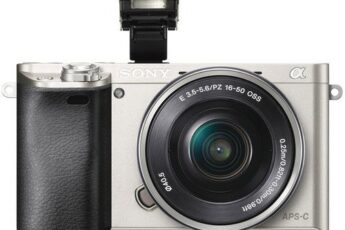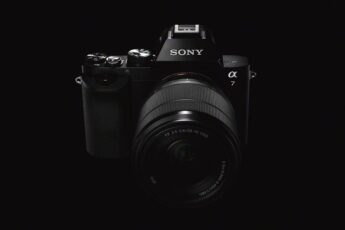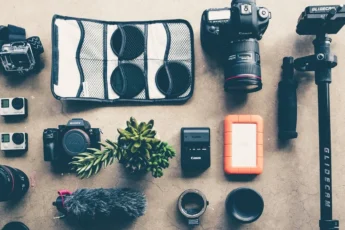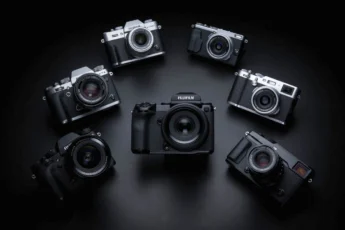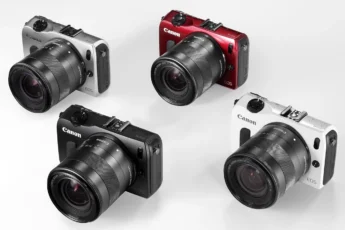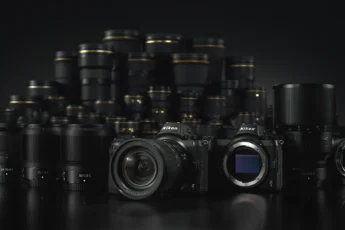The Sony a6300 is the successor to the immensely popular a6000, which received rave reviews following its release. The a6300 is a mirrorless camera. It uses its sensor as autofocus system, image creator, and viewfinder all-in-one. DSLR cameras, on the other hand, have separate systems for each of these functions. As a result, mirrorless cameras are far more compact than DSLR cameras, though they also tend to use battery life faster. The Sony a6300 is one of the best beginner to intermediate mirrorless cameras on the market today. We will explore the full suite of features offered, below.
Have you read enough reviews of this camera?
- Sony a6300 Technical Specifications
- Build Quality
- Image Quality
- What additional features does the Sony a6300 have?
- How does the Sony a6300 compare to the Canon EOS M6?
- Advantages of the Sony a6300
- Advantages of the Canon EOS M6
- How does the Sony a6300 compare to the Sony a6000?
- Who is the Sony a6300 for?
- Sample Images
- Final Thoughts
Sony a6300 Technical Specifications
- Price: from $748.00 body-only, from $748.00 with kit lens
- Kit Lens: Sony E PZ 16-50 mm f/3.5-5.6 OSS Lens. OSS stands for “Optical Steady-Shot,” which is a form of in-lens Image Stabilization.
- Sensor: 24.2 MP sensor (APS-C sized 23.5 x 15.6 mm)
- Number of Autofocus Points: 425 phase detection and 169 contrast detection AF points. Phase detection uses paired AF points to sense the differences in light reaching them from the subject. Contrast detection uses the image generated by the sensor to search for maximum contrast. By using both of these autofocus types, the lens can be continually adjusted to optimum focus.
- Built-In Flash: Yes; 6.0 m range at ISO 100. ISO 100 is the lowest level of light sensitivity; increasing the ISO value will increase the range of flash sensitivity.
- Continuous Shooting: 11 frames per second
- ISO Range: 100-25,600 with digital boosting to 51,200
- Video Recording Capability: 4K 3840×2160 (30, 25, 24 fps), Full HD 1920×1080 (120, 100, 60, 50, 30, 25, 24 fps), HD 1280×720 (30, 25 fps)
- Image Format: JPEG and RAW. JPEG is the image format used to display photos on most devices. As a compressed format, the file sizes are greatly reduced at the cost of quality. RAW files are the original image files created by the camera. RAW files are larger than JPEGs but are of the highest image quality.
- Wireless Connectivity: Yes; Wi-Fi, QR (quick response) scan, and NFC (Near Field Communication). Smart devices with QR scanning apps installed can use the complex picture code created by the a6300 to sync the two wirelessly. With Sony’s Playmemories app for Android and iOS, smart devices can be used to remote control the camera. Photos and videos can also be shared from your camera to your smart device.
- Supported Memory Cards: SD, SDHC, SDXC, UHS-I, Memory Stick Pro Duo, Memory Stick Pro-HG Duo
- Battery Life (CIPA Rating): 400 images per charge
- Weight: 404 g (0.89 lb / 14.25 oz)
- Dimensions: 120 x 67 x 49 mm (4.72 x 2.64 x 1.93 in)
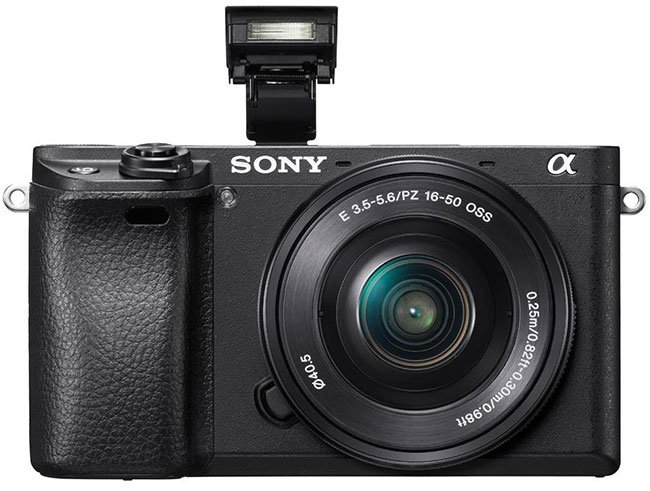
Build Quality
The Sony a6300 has a much more rugged feel compared to the Sony a6000. The inner frame, as well as the top, front, and rear plates are all composed of magnesium alloy. Durable and lightweight, this construction gives it an edge over the traditional composite plastic used by most digital cameras. The structure is double layered and comes with additional sealing around the buttons and lens mount. According to Sony, the a6300 is “dust and moisture resistant,” but not water or splash proof. This resistance only works with Sony lenses, as non-Sony lenses may not mount properly with the weather sealing.
The camera has both a flash and a hot shoe to attach an external flash if necessary. And the 921,000 pixel LCD screen tilts up and down, but is not fully articulating.
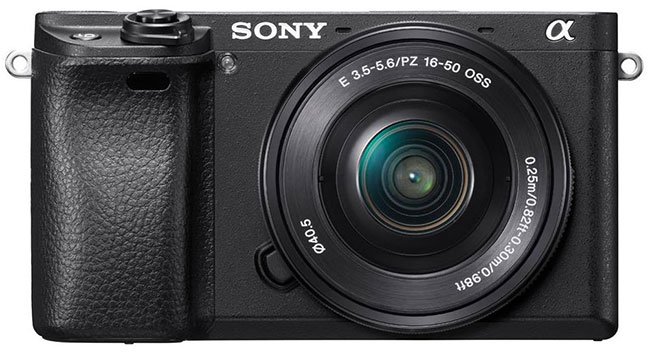
Image Quality
The Sony a6300 uses an APS-C sensor sized 23.5 x 15.6 mm. APS-C sensors are just below full-frame sensors in the amount of area available for light collection. This large collection zone is essential for minimizing noise in low light situations. Larger sensors also give better control over the depth of field in a given image. Depth of field is how much of a given scene is in sharp focus.
The sensor resolution of 24.2 megapixels is standard for cameras at this price tier. Most photographers will find this number of megapixels to be plenty. 24.2 MP allows the user to create 300 pixel per inch uncropped prints up to 13 x 20 inches in size. Also, extra megapixels are handy when cropping needs to be done post-shoot. Extra megapixels help keep cropped photos from losing too much resolution.
Sony is not forthcoming on whether the a6300 has an anti-aliasing (low-pass) filter or not. Low-pass filters are useful for preventing moiré patterns in certain situations at the cost of resolution. Moiré are errors caused by complex repeating patterns like feathers, fabric, and window screens. Manufacturers usually mention whether or not a given camera has one. But with testing, the a6300 shows moiré in the above situations. Therefore, it’s most likely the a6300 does not have a low-pass filter.
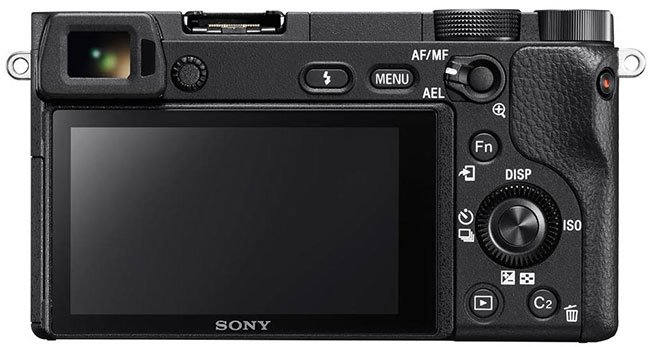
What additional features does the Sony a6300 have?
No discussion of the would be complete without talking about its magnificent hybrid autofocus system. Easily one of the best mirrorless AF systems currently available, the a6300 pairs 425 phase detection points with 169 contrast detection points. Phase detection and contrast detection are the two major types of autofocus used by interchangeable lens cameras. Phase detection points are actually pairs of points. Each pair can detect differences in the phase of light reaching them. If the pairs detect differences between them, the camera will adjust the lens focus until they match. Phase detection is faster than contrast detection but not as accurate. It’s also better for low light scenes with less contrast to work with.
Contrast detection uses the image sensor to adjust the detected scene for optimum contrast. Contrast detection is slower as the lens has to pan in-and-out to find the optimum point, but overall it’s more accurate than phase detection. Joining both together creates a hybrid AF system that uses phase detection to narrow down focus so contrast detection can lock on much more quickly. Coupled with the fast BIONZ X processor, the a6300 is built for speed, accuracy, and AF flexibility.
The Sony a6300 has several features that make good use of this combined approach. Lock-on AF is just like Continuous AF on other cameras, with a slight twist. If the subject leaves the scene and reappears, the camera recognizes the subject and focuses on it again. Lock-on AF is an excellent feature for photographers who often shoot action and wildlife photography.
Eye-AF is another impressive tool and it does exactly what you’d expect. Often autofocus can lock onto an ear or nose to get approximate coverage of a subject’s face. With the proper depth of field, this is usually good enough. Using Eye-AF, the intelligent software of the a6300 locks onto and tracks the eyes of the subject. This is especially important when you find yourself using aperture settings that have very narrow depths of field. A narrow depth of field means the amount of an image in sharp focus is very small. Eye-AF will ensure you never miss the perfect portrait.
The Sony a6300 can shoot up to 11 frames per second using continuous drive. Continuous drive also uses Continuous autofocus to track the subject as it shoots. The camera slows down slightly to 8 fps when using the LCD screen instead of the EVF, but that’s still remarkably fast.
The hybrid autofocus system of the a6300 is well suited to videography as well. AF tracking sensitivity allows the user to adjust how fast the autofocus adjusts. To a photographer, that may sound like a strange feature; surely we always want our subject in tight focus instantly. But a videographer might want to have the subject slowly come into focus instead.
The a6300 has other features videographers will want to explore. 3840×2160 4K video is a welcome upgrade over the max Full HD of the a6000. The a6300 capturing video at 120 fps in Full HD means you’ll capture every moment no matter how fast things are moving. And if you want to slow things down, it offers 4-5x slow motion shooting when using 25 fps. The a6300 also offers S-Gamut/S-Log shooting, which increases the dynamic range of recorded video by up to 1,300%. Dynamic range is the range of dark and light tones in an image. In doing so, details that would otherwise be lost due to bright highlights or deep shadows, are brought forth.
Lastly, the a6300 supports connections to professional grade microphones thanks to its XLR port. However, this is only in combination with the separately sold XLR adapter.
The Sony a6300 also has a few tools to use in combination with the smart electronic viewfinder. When looking through the EVF, the focus magnifier appears. This is an area of the EVF that’s significantly zoomed in. The expanded area ensures you can find the optimum point of focus before shooting.
Zebra stripes are a tool offered by the a6300 dealing with exposure. These patterns show parts of the image that are likely to be overexposed when the final photo is taken. It’s a clue saying you may need to adjust portions of the exposure triangle or use the exposure compensation setting. Otherwise you may have brightly lit, washed out portions in your photograph.
Like several other mirrorless cameras, the Sony a6300 has silent shooting mode. Instead of using the mechanical shutter, the camera switches to an electronic one. This e-shutter is entirely silent, keeping the photographer from distracting their subjects. Silent shooting mode is great for event shoots and street photography.
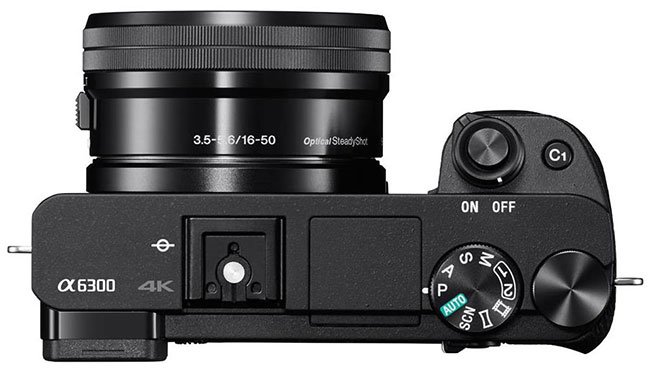
How does the Sony a6300 compare to the Canon EOS M6?
The Canon EOS M6 has a similar skeleton to the Sony a6300. Both have 24.2 megapixels of resolution, large APS-C sized sensors, and similar pricing. But from there, the two cameras show vastly different strengths and weaknesses.
Advantages of the Sony a6300
Autofocus points: The a6300 has 425 phase detection points and 169 contrast detection points. That’s hundreds more than the 49 phase detection points offered by the EOS M6.
Autofocus system: The a6300 uses a hybrid design that optimizes both speed and accuracy. The M6 focuses on speed using phase detection only. Yet the a6300 handily beats the EOS M6 in speed as well. Using continuous drive, the Sony a6300 can shoot up to 11 fps compared to 9 fps for the EOS M6.
Video Resolution: 4K video is the highest video resolution of the a6300. The EOS M6 maxes out at Full HD resolution.
Battery Life: At 400 shots per charge, the a6300 has more stamina compared to the EOS M6 (295 shots per charge).
Environmentally Sealed: While both cameras have a durable metal and plastic construction, the a6300 is also dust and moisture resistant.
Electronic Viewfinder: The EVF of the a6300 means the user can shoot with an eyepiece like a traditional DSLR user would. The EOS M6 uses the LCD screen only to compose photos, but has a hot shoe to attach an EVF if needed.
Lens support: The Sony a6300 can use 71 lenses without needing any adapters. The Canon EOS M6 currently supports only 12 lenses. With the EF-M adapter, the EOS M6 can use hundreds of Canon lenses. However, the EF-M adapter is sold separately.
Advantages of the Canon EOS M6
Image Stabilization: While some of the higher priced Sony mirrorless cameras have in-body IS, the a6300 is not one of them. The EOS M6 uses digital image stabilization combined with the in-lens IS of EF-M lenses to reduce or negate motion blur.
Multishot Noise Reduction: For photographers that spend a lot of time shooting in low light, this is a great feature. The camera takes a quick burst of four images and then selects the clearest signals for the final image. This gives the EOS M6 an edge in situations where high ISO values are needed. The a6300 has digital ISO boosting to ISO 51,200, but digital ISO boosts are extremely noisy. Because digital ISO boosts fake that value with software, images end up being even noisier. MNR is the best way to shoot when using higher ISO values.
Touchscreen: The LCD of the EOS M6 is a touchscreen. Menu choices, shutter control, and AF points can be selected with the touch of a finger.
Overall the Sony a6300 brings more features for the money compared to the Canon EOS M6. The M6 does have some important strengths. Built-in image stabilization and Multishot Noise Reduction are solid features in any camera. But the autofocus system alone of the a6300 counts for two or even three advantages of the M6. 4K video, improved endurance, an EVF, larger lens selection, and environmental sealing, make the Sony a6300 the better camera.
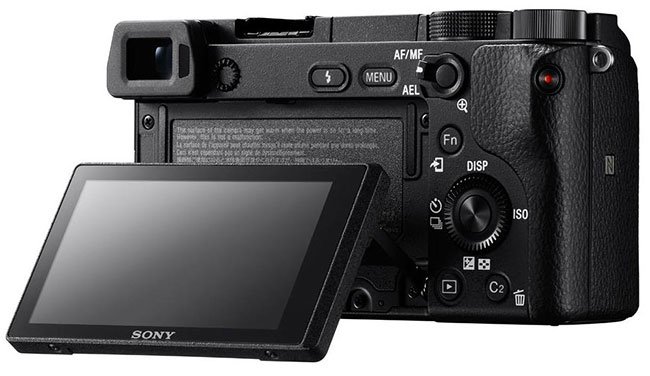
How does the Sony a6300 compare to the Sony a6000?
Long hailed as the world’s most popular mirrorless camera, the Sony a6000 is a camera that’s very hard to improve upon. But the a6300 brings several upgrades to the a6000 worth considering. The dust and moisture resistance of the a6300 is useful for peace of mind in poor environmental conditions. Both cameras have fast 11 fps continuous shooting modes. But the a6300 has 425 phase detection and 169 contrast detection AF points vs 179 phase detection and 25 contrast detection points in the a6000. As a result, the a6300 has nearly 7.5 times the autofocus point coverage compared to the a6000. Although both use Sony’s BIONZ processor, this gives the a6300 an even easier time tracking subjects.
The a6300’s 4K video resolution is four times that of the a6000’s Full HD resolution. The resolution of the electronic viewfinder is also improved. At 2,359,000 vs 1,440,000 pixels, the a6300 has 63% more resolution for clearer EVF views. Lastly, the microphone port of the a6300 is a new addition, solidifying its place as a videographer’s camera.
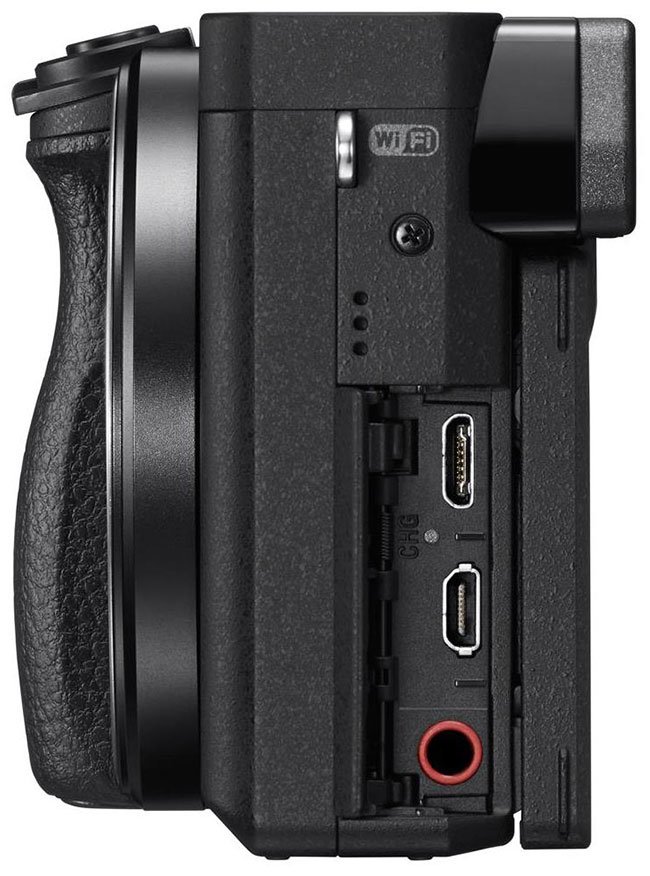
Who is the Sony a6300 for?
This camera is extremely well rounded and will create excellent images in nearly any style of photography. It’s fast hybrid system and high number of autofocus points make it an excellent sports and events camera. The autofocus tracking options help as well. The lack of image stabilization is a concern for handheld portrait shooting. Wedding and other event photographers should be using a tripod or monopod with the a6300. Price-wise it’s attractive to beginners. Features and quality-wise, it is a solid intermediate-level camera.
Sample Images
Final Thoughts
The Sony a6300 has the sensor size and resolution to take excellent photos, even without considering the huge number of features it comes with. Yet when compared to cameras with similar base statistics like the EOS M6, the a6300’s strengths are obvious. The a6300’s diversity of autofocus choices combined with its innate speed, make it a very flexible camera. The price is just above entry-level, but for the money, the user gets plenty to work with. The a6300 is a solid upgrade from the a6000 in many ways. But if budget is a concern, the a6000 can be found as low as $448.00 with kit lens in many retail markets. In conclusion, the Sony a6300 is an excellent choice for any photographer.



















